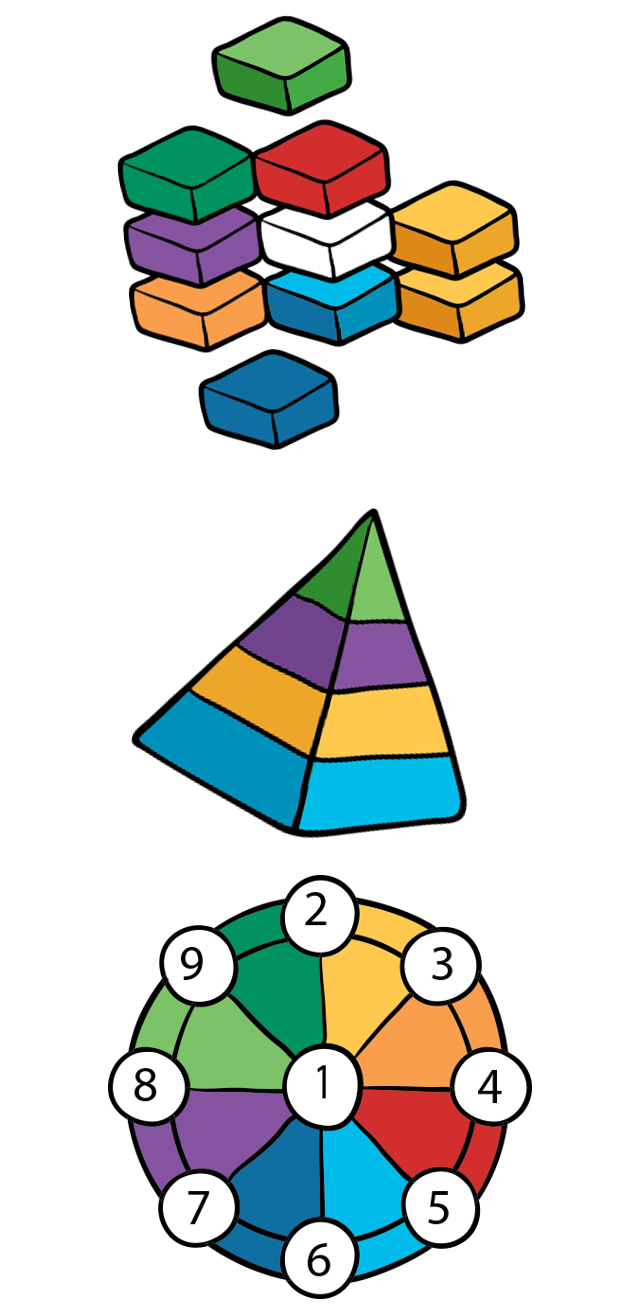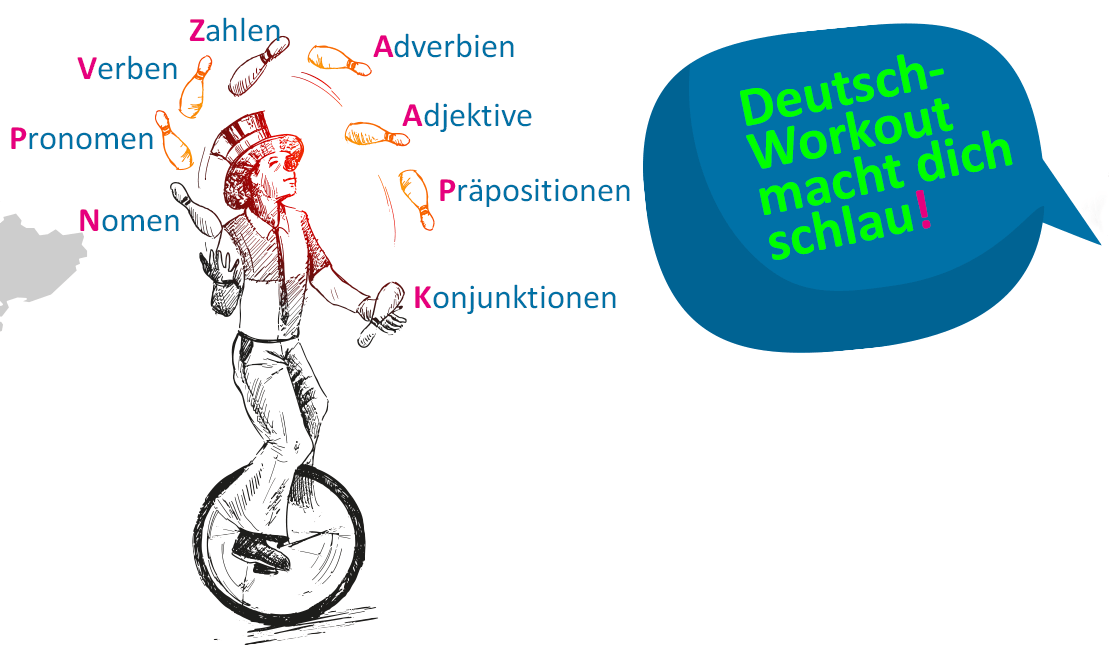At B1 level, the functions of the parts of speech are expanded and you learn more ways of using and changing parts of speech. This page gives you an overview of the possibilities:
Verbs indicate the action in the sentence. Conjugated verbs in the main clause are in position 2.
At German A2 level, subordinate clauses and relative clauses are dealt with and learners therefore learn that the conjugated verb in subordinate clauses comes at the end of the sentence. Reflexive verbs are also used at A2 level. Tenses such as perfect vs. preterite and past perfect are discussed and used.
More about verbs at A2 level:
Nouns are names of phenomena, living beings, objects, plants, places and landscapes etc. In German, fixed article genders with nouns and plural endings are learned.
It is important that nominalization such as nominalization from verbs, adjectives and composition of nouns or compounds occurs from A2 German level. Some rules are helpful when learning nouns and help learners to better remember the gender of nouns.
More about nouns at A2 level:
Pronouns are words for addressing, addressing and replacing the nouns mentioned. For example. A feminine noun is replaced with sie in the position of a subject with masculine er and neuter es. Depending on the position in the sentence, they are used with the nominative, accusative or dative rule.
From A2 German level, relative clauses and reflexive verbs and therefore reflexive pronouns are introduced and used. That’s why you learn more uses of pronouns.
More about pronouns at A2 level:
Adjectives express characteristics of a noun or subject in a sentence with the verb sein. Adjectives in German always come before nouns.
Adjective declension is fully introduced and used at A2 German level. Adjectives are trained in the use of comparatives, comparatives, superlatives and as complements for nouns.
More about adjectives at A2 level
Adverbs indicate the status or state of the action in the sentence if they are placed at the end of the sentence. If they come before a statement in the sentence, they strengthen the state of the statement.
Adverbs for frequency, graduation, order etc. are frequently used from A2 German level.
More about adverbs in the German language:
Prepositions are connecting words for further explanations, clarifications and expansions in a sentence. There are prepositions with accusative, dative and alternating prepositions, at A2 level also with genitive.
From A2 German level onwards, some prepositions are used, e.g. aufgrund, wegen or trotz etc. In addition, prepositional use is reinforced in written tasks, while connectors are used for the use of subordinate clauses in oral communication.
More about prepositions at A2 level:
Conjunctions are connectors between sentences, parts of a sentence. ADUSO (aber, denn, und, sondern, oder) are in position 0 in the sentence.
At A2 German level, connectors for subordinate clauses are discussed and expanded. One change that must be internalized immediately is that subordinate clause connectors are always placed at the beginning of subordinate clauses and conjugated verbs in subordinate clauses are always placed at the end of the sentence.
More about conjunctions at A2 level:
For example, numbers determine the plural or singular form of verbs when they are connected to the subject and determine the articles and endings of nouns because of singular or plural.
Fractions are introduced and taught at A2 level.
More about numbers at A2 level:

That was a brief overview of the typical parts of speech in German. If you would like to know more about certain word types, you can browse through our learning aids and find out more about them and other grammar topics. Have fun with it!

